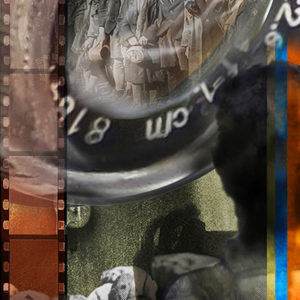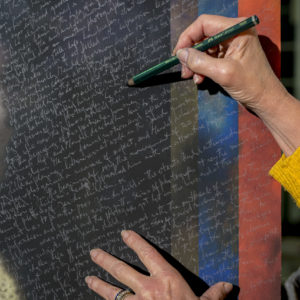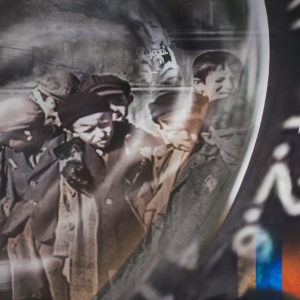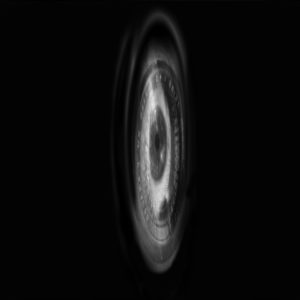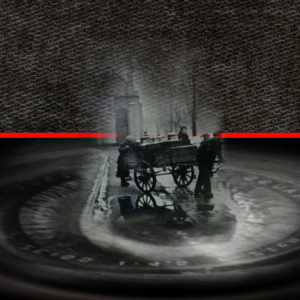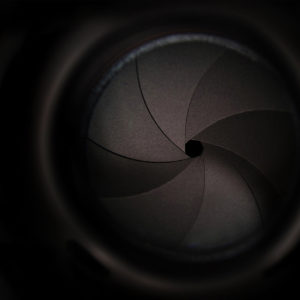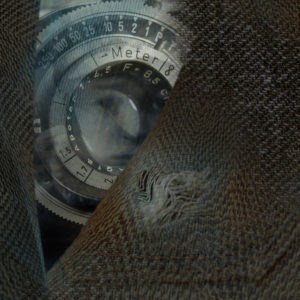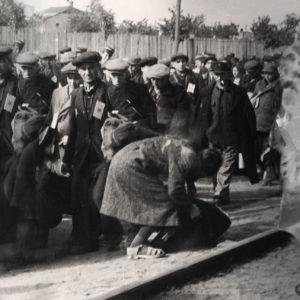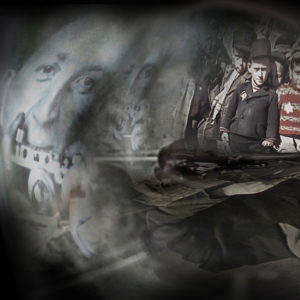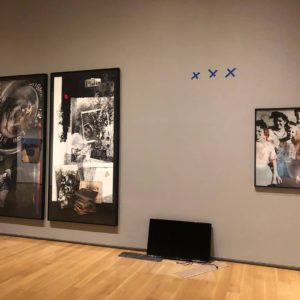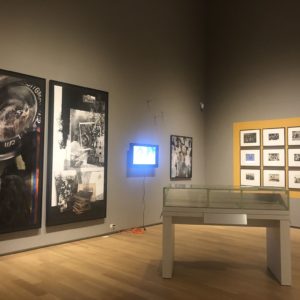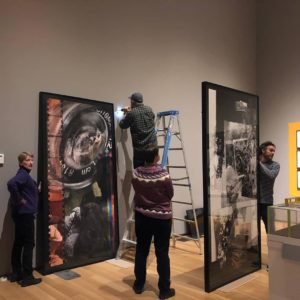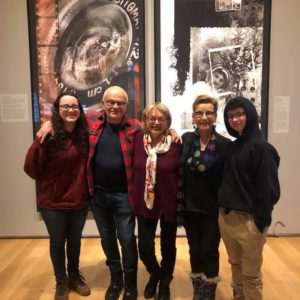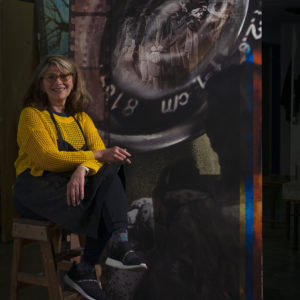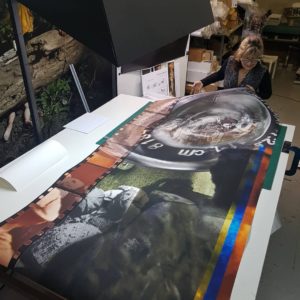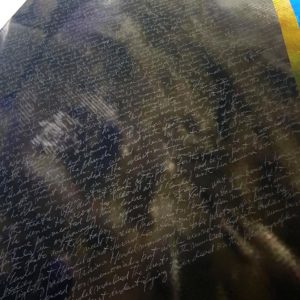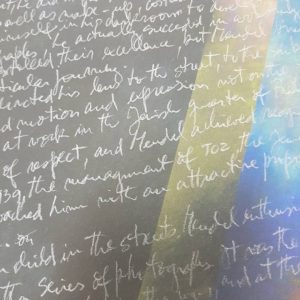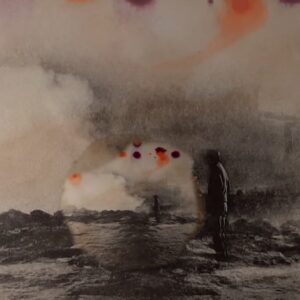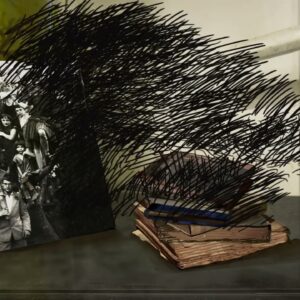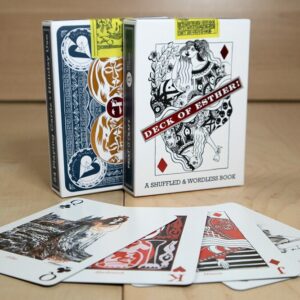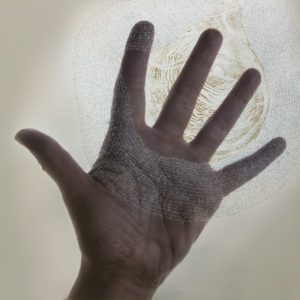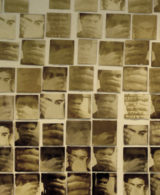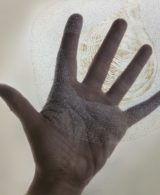Foreword by Marianne Hirsch & Leo Spitzer
Bearing Witness, Tribute to Mendel Grossman
Niemandzeugtfür den Zeugen
[No one bears witness for the witness]
Paul Celan
Contemporary artists engaging with Holocaust photographs face ambiguities surrounding their sources and categorizations. Paradoxically, and no doubt owing to their relative ubiquity, they often have to resort to images taken by perpetrators for art projects memorializing the victims. Mirta Kupferminc, in her dazzling artist’s book Bearing Witness, contests this practice by highlighting the courageous clandestine acts of witness of Jewish ghetto photographer Mendel Grossman. Built around Grossman’s camera lens, this book is a tribute to photography as a technology of political resistance. It is also a memorial to the lives lost in the ghetto in Lódz, a city where Kupferminc’s father lived before being deported to Auschwitz.
The germ of this project is a photograph taken by amateur photographer Walter Genewein, a high-ranking Nazi official, who took over six-hundred 35mm color slides recording the activities of Jews in the Lódz ghetto between 1940 and 1944. A color-slide image of a group of young Jewish schoolchildren, each wearing a Nazi-mandated “Jew star,” shows them waiting for food in front of an unidentified building – in all likelihood, their school. Originally captioned Schuljugend (“school youngsters”) in German, the photograph was taken in 1941 during the brief months when Nazi authorities still permitted some non-vocational schooling in the ghetto. Soon after this photo was taken, the Nazis began to deport Lódz ghetto Jews whom they deemed as unfit workers in their war effort to nearby Chelmno, where nearly all – no doubt including many of the children in the Schuljugend photo – were murdered in gas vans.
What did the children see when they looked into Genewein’s camera lens, Kupferminc wonders. Aligning herself with them, and thereby animating their presence and their experience of the photographic event, she creates an alternate scenario. Refraining from directly displaying the photo taken by the Nazi photographer, Kupferminc reverses his gaze and grants the children a point of view. She represents Genewein only as a cold static lens, situated above the children, focused on their image. In that lens, however, his look is also returned. We see the children staring back, some defiantly, but, more than that, in a fleeting, barely visible reflection, we also see another person, an adult that Kupferminc imaginatively places into this scene. This is Mendel Grossman, a Jewish witness. Employed as an official photographer to publicize activities of the Lódz ghetto Jewish Council, Grossman secretly secured a small camera for his own use. He saved and hid film stock and daringly took and then buried hundreds of surreptitious images – some taken through a buttonhole of his coat or a crack in a door – in order to ensure that a fuller visual record of a population slated for destruction would have the possibility to survive into the future. In Kupferminc scenario, Grossman stands behind the children as he secretly photographs the photographer Genewein. Placing Genewein’s lens inside his own, Grossman thus offers the children a frame through which they can look back at Genewein, making him the object of their gaze. All the while, Grossman, as clandestine witness, remains unseen and thus also free. Through this act of creative repair, Kupferminc has given Grossman and the children control of the visual field.
On the surface of this layered work, Kupferminc graphically inscribes the story of Grossman’s courageous acts in the ghetto in her own handwriting. She notes that “the texture of the graphic handwriting produces a veil that paradoxically, unveils Mendel´s hidden way of taking the photos. While writing, I felt like a scribe who copies by hand a milenary text on the scrolls of a Torah.” Placing her text on the projection of a shadow, Kupferminc touches Grossman from a great distance and, by way of her direct touch, brings him closer to us.
Bearing Witnesshighlights the subversive work of Grossman’s witnessing lens. Whether open or shut, hidden or exposed, that lens, seen here from multiple angles and revealing multiple scenes, becomes a persistent and irrevocable witness to this ghetto and to the history of destruction and survival that we have come to think of as the Holocaust. This artist’s book is an intimate document of second-generation witnessing in retrospect. It is an act of love – a gift from the future for those who were, and for those who were not, able to survive. Within it, a painful legacy becomes a work of beauty and act of repair.
Marianne Hirsch and Leo Spitzer

